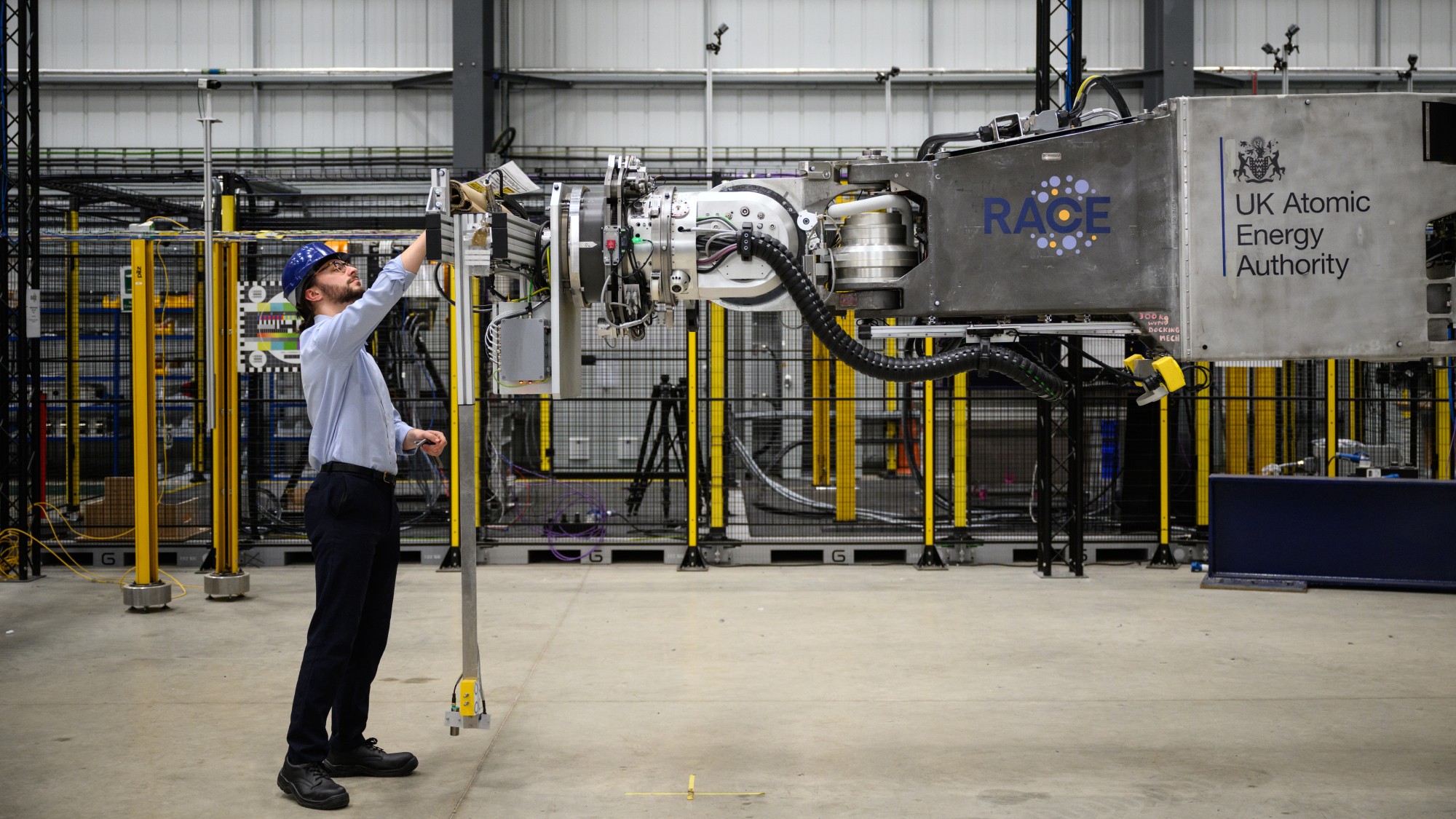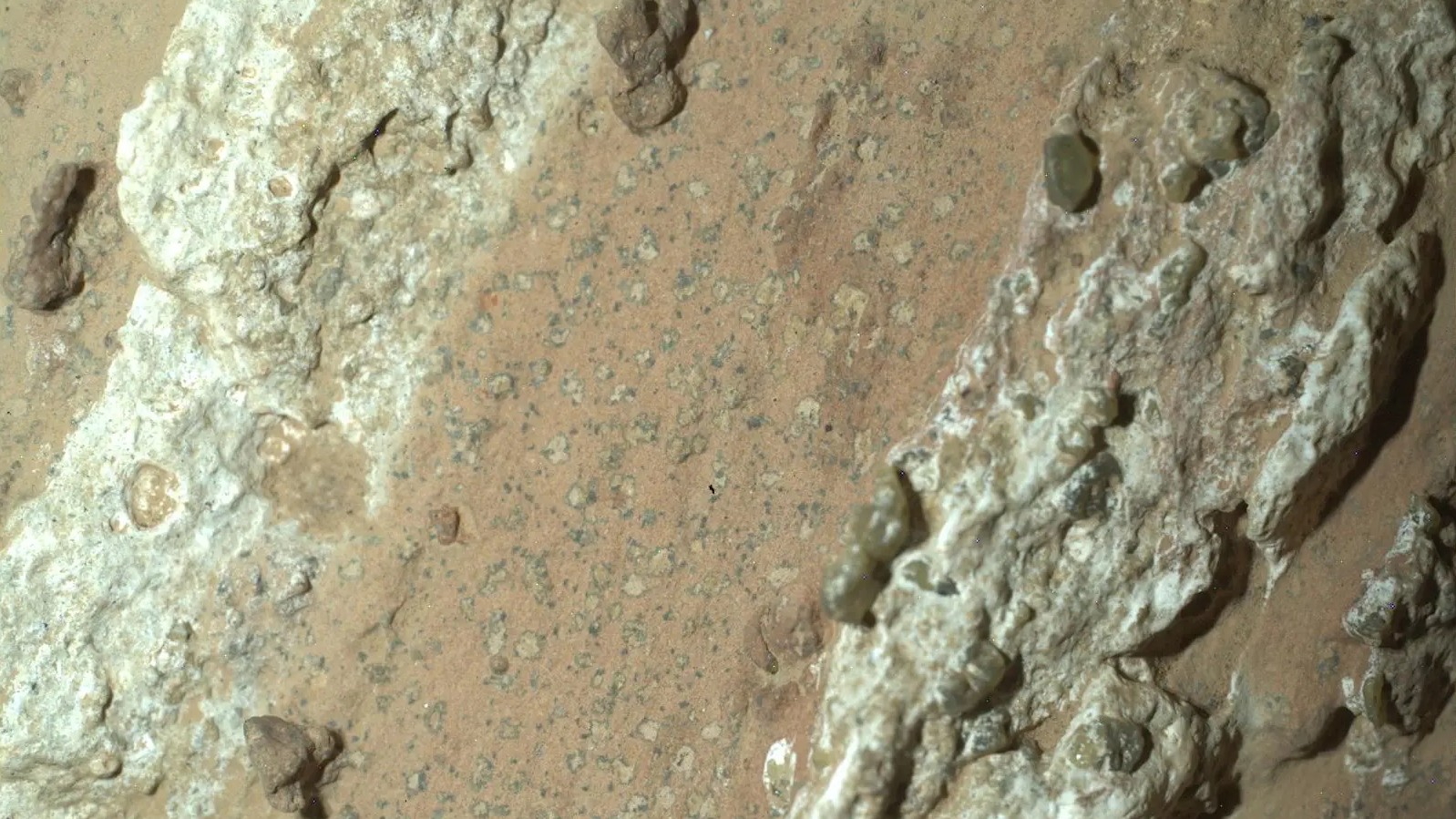Why NASA is worried about sand storms
A new tool on the International Space Station can provide key information about this increasingly common phenomenon


NASA scientists are beginning to map out dust and sand storms in order to plan for the future in the fight against climate change. Here's everything you need to know:
What are dust storms?
Dust storms and sand storms happen "when strong winds lift large amounts of sand and dust from bare, dry soils into the atmosphere," the World Meteorological Organization explains. These particles can be carried thousands of miles and can worsen air pollution.
There has been an increase in dust and sand storms because of land degradation and droughts caused by climate change, according to the United Nations. The storms can "damage crops, kill livestock, and strip topsoil" in the areas where they originated, "while distant areas are affected by atmospheric dust and surface dust deposits, which affect human health as well as disrupt transportation, supply chains, and power networks."
The Week
Escape your echo chamber. Get the facts behind the news, plus analysis from multiple perspectives.

Sign up for The Week's Free Newsletters
From our morning news briefing to a weekly Good News Newsletter, get the best of The Week delivered directly to your inbox.
From our morning news briefing to a weekly Good News Newsletter, get the best of The Week delivered directly to your inbox.
Dust particles in the air also have a greenhouse effect: They trap heat in the atmosphere and warm the planet. Approximately 40 percent of atmospheric aerosols, which are minute particles suspended in the atmosphere, are dust particles resulting from wind erosion.
What is NASA doing to track dust storms?
NASA is using an imaging spectrometer called the Earth Surface Mineral Dust Source Investigation (EMIT), located on the International Space Station, to map out global dust storms. EMIT works by "imaging spectroscopy in the visible and short-wave infrared range," meaning it uses the dust's hue to determine its mineral makeup and map how it affects the temperature of the region it initiated in, NASA explains.
Each type of dust reflects light in a unique way, climate scientist Natalie Mahowald, who is working with NASA on EMIT, told CNN: "Red and the dark dust absorbs it," and white reflects the radiation, she explained. Dark dust has a greenhouse gas effect because it traps heat on the Earth. The instrument, launched last year, collects data on dust storms from space, greatly expanding the current data set by providing billions of data points rather quickly, CNN says.
"We can use that (data) to better understand what the impact of desert dust is," Mahowald said, adding that EMIT will "revolutionize what we can do."
A free daily email with the biggest news stories of the day – and the best features from TheWeek.com
Why are scientists interested in dust and sand storms?
Sand and dust aren't inherently bad, but problems arise when there is too much of them. "When the dust settles in water or on land it can provide nutrients for ecosystem growth," writes NASA. Because climate change is making sand and dust storms more common, there are concerns about the aerosols contributing to global warming. This also acts as a feedback loop, CNN says: the higher temperatures get, the more storms there will be.
As storms in the Sahara Desert become more severe, the Arctic is feeling the effects. "We noticed that during the last two decades, the darkening of the ice in the Arctic was becoming significant," Diana Francis, a climate scientist at Khalifa University in Abu Dhabi, told CNN. "We know that when the ice is dark it'll reflect less of the solar light, and therefore it'll melt faster."
EMIT's data will help scientists map where dark dust is becoming more prevalent, and why. "Scientists know that most of the mineral dust transported in Earth's atmosphere comes from arid, or dry, regions around the globe," NASA explains. "But they aren't certain what types of minerals the wind carries from those regions."
"The EMIT project is testing the waters, and really showing what is possible," Mahowald told CNN. "We're going to go from 5,000 to billions of pieces of data, and much higher resolution. That's going to help us tremendously."
Devika Rao has worked as a staff writer at The Week since 2022, covering science, the environment, climate and business. She previously worked as a policy associate for a nonprofit organization advocating for environmental action from a business perspective.
-
 Pipe bombs: The end of a conspiracy theory?
Pipe bombs: The end of a conspiracy theory?Feature Despite Bongino and Bondi’s attempt at truth-telling, the MAGAverse is still convinced the Deep State is responsible
-
 The robot revolution
The robot revolutionFeature Advances in tech and AI are producing android machine workers. What will that mean for humans?
-
 Health: Will Kennedy dismantle U.S. immunization policy?
Health: Will Kennedy dismantle U.S. immunization policy?Feature ‘America’s vaccine playbook is being rewritten by people who don’t believe in them’
-
 Blue Origin launches Mars probes in NASA debut
Blue Origin launches Mars probes in NASA debutSpeed Read The New Glenn rocket is carrying small twin spacecraft toward Mars as part of NASA’s Escapade mission
-
 ‘The Big Crunch’: why science is divided over the future of the universe
‘The Big Crunch’: why science is divided over the future of the universeThe Explainer New study upends the prevailing theory about dark matter and says it is weakening
-
 Why scientists are attempting nuclear fusion
Why scientists are attempting nuclear fusionThe Explainer Harnessing the reaction that powers the stars could offer a potentially unlimited source of carbon-free energy, and the race is hotting up
-
 The moon is rusting
The moon is rustingUnder the radar The Earth is likely to blame
-
 Panspermia: the theory that life was sent to Earth by aliens
Panspermia: the theory that life was sent to Earth by aliensUnder The Radar New findings have resurfaced an old, controversial idea
-
 Africa could become the next frontier for space programs
Africa could become the next frontier for space programsThe Explainer China and the US are both working on space applications for Africa
-
 NASA reveals ‘clearest sign of life’ on Mars yet
NASA reveals ‘clearest sign of life’ on Mars yetSpeed Read The evidence came in the form of a rock sample collected on the planet
-
 Canyons under the Antarctic have deep impacts
Canyons under the Antarctic have deep impactsUnder the radar Submarine canyons could be affecting the climate more than previously thought
